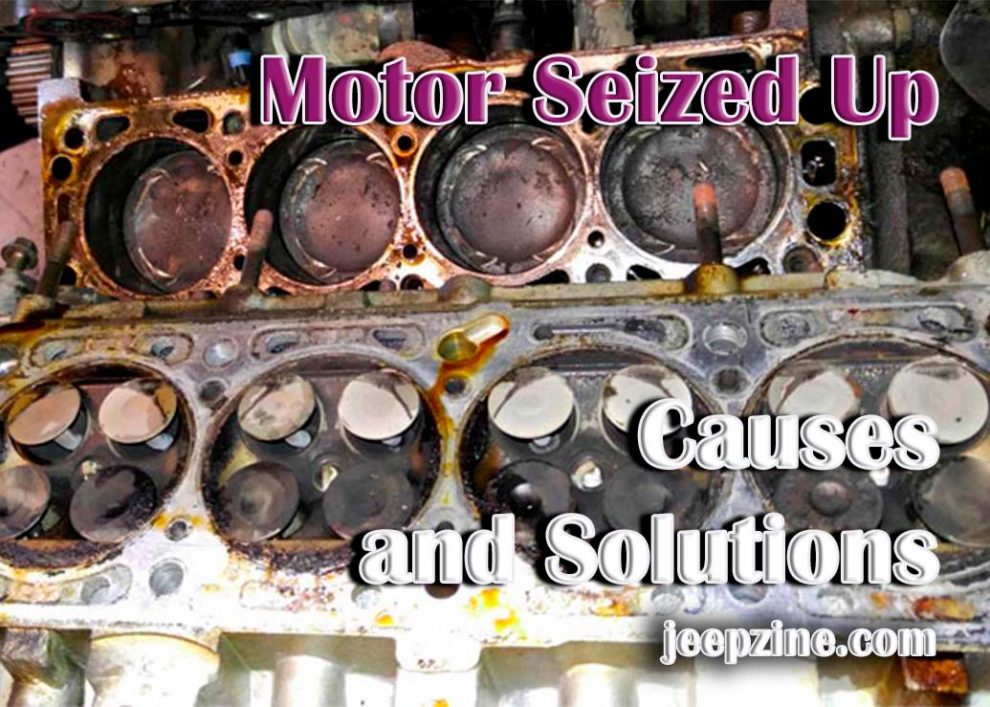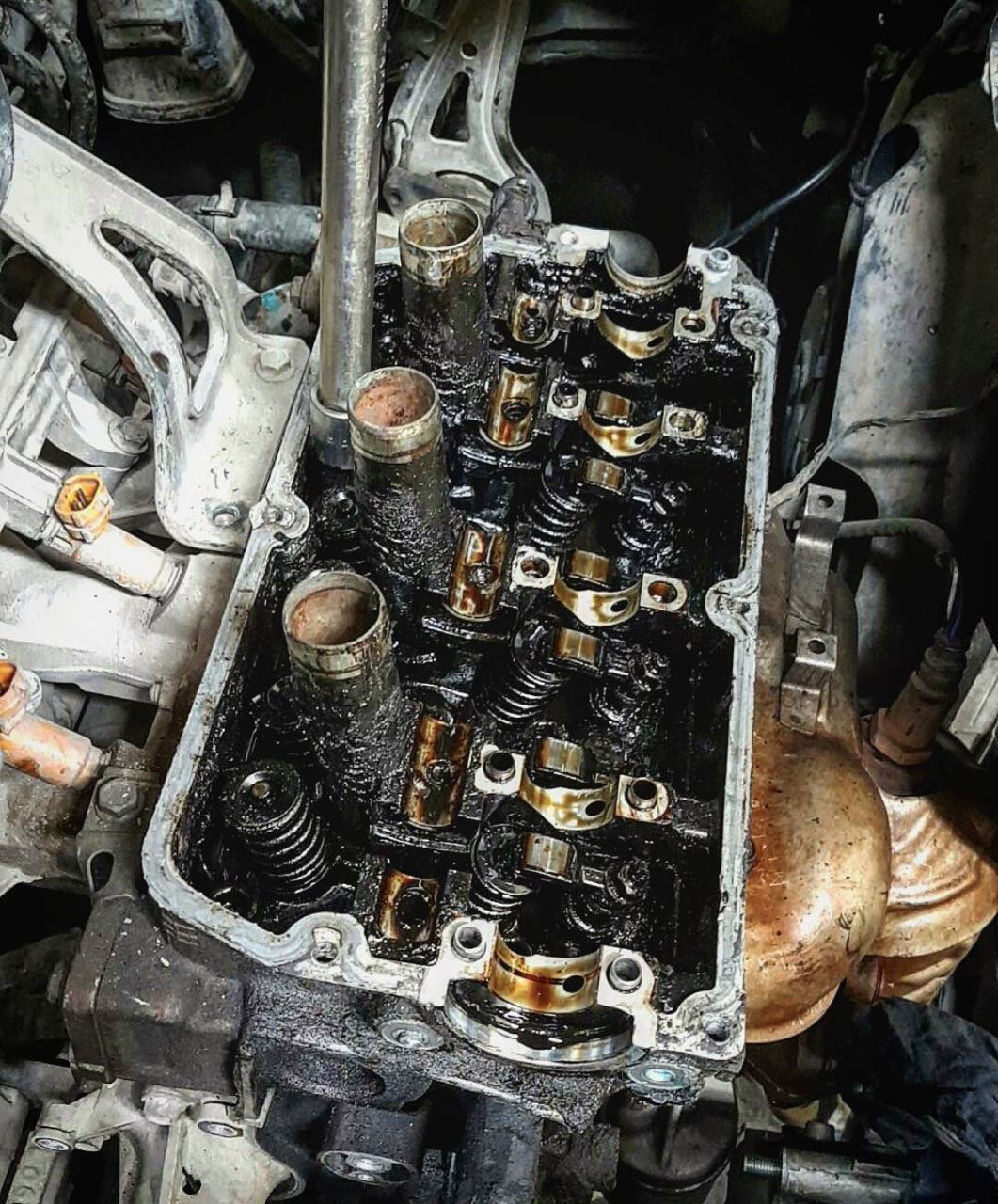When you’re driving, the last thing you want to experience is having your motor seized up. It can be scary when your vehicle suddenly shuts down and won’t start again, leaving you stranded in the middle of nowhere. Seized up motors are an unfortunately common issue for drivers. It is important to understand what causes a motor to seize up and how you can prevent or fix it when it does happen. In this article, we will discuss what a seized up motor is, the common causes of this issue, and solutions for this problem so you can get your motor running again as soon as possible.
What Is a Seized Up Motor?
A vehicle seized up motor is when the engine stops working due to a lack of lubrication. When the piston comes in contact with metal parts, it can cause friction and heat, which will eventually cause the engine to stop running. The most common symptom of a seized up motor is when the starter fails to turn over when you try to start your car, and all you hear is clicking from underneath the hood. Other symptoms include smoke coming from under the hood or an inability for the oil pressure gauge needle to move. When a motor is seized up in a car, it can lead to a sudden and unexpected breakdown, leaving the vehicle stranded and inoperative. Also read about ‘can you drive without a hood‘ to understand the legal and safety implications of operating a vehicle in such a condition. In some cases, attempting to start the car when the motor is seized can further damage the engine.
Common Causes of a Seized Up Motor
A seized up car engine occurs when the engine’s components are not able to move freely. It can be due to many common causes:
-
Overheating: If the engine is too hot, the oil that lubricates the moving parts can get too thick, resulting in a seizure. The most common cause of overheating is lack of coolant, although other issues like worn-out water pumps or cooling fans can also contribute.
-
Lack of Lubrication: If the engine is not getting enough oil, it can become dry, causing friction between the parts, and preventing them from moving freely. It can happen if the oil level is too low, or the wrong oil type is used.
-
Lack of Maintenance: If a car has not been serviced regularly, it may have worn-out components that no longer move efficiently and can cause a seizure.
-
Contaminated Oil: If dirt particles build up in the engine’s oil filter, they can clog it and prevent coolant from reaching some moving parts. This contamination can result in a seizure as well. Also have a look at Best 6.0 Coolant Filter Kit .
-
Fuel Contamination: Dirt or debris entering the fuel system can clog the injectors and prevent fuel from reaching some moving parts. Again, this can lead to a seizure.
-
Timing Belt Failure: A broken or worn timing belt can disrupt the engine’s timing and cause internal collisions between pistons and valves, potentially leading to engine seizure.
No matter the cause, acting when a seized engine occurs as soon as possible is important. Otherwise, you may face costly repairs or even an expensive engine replacement.
Solutions for a Seized Up Motor
When a car motor seizes up, it’s usually the result of the engine overheating and seizing due to a lack of lubrication. To fix this issue, drivers should address the root cause: insufficient lubrication. If an oil leak is suspected, ensure that all hoses and seals are in good condition and that no oil is leaking out of the engine. Once the oil level has been checked and topped off, if necessary, start the vehicle and allow it to run for a few minutes at idle speed to distribute engine lubrication throughout its components evenly.
If this doesn’t resolve the issue, more solutions may be needed. Components may need replacing if there is significant metal-on-metal contact in any part of the motor due to wear or damage from overuse or prolonged heat exposure. Depending on where the seized portion lies within an engine’s assembly – such as pistons or crankshaft – motor parts may need to be removed individually for repair or replacement. In some cases, the seized portion of the motor may need to be replaced entirely. It may require a complete engine rebuild or an engine swap, depending on the severity of the damage and its location. Also read here about Crankshaft Seal Replacement.
Conclusion
A seized up motor can be a scary and inconvenient experience for drivers. It is essential to understand the causes of a seized motor and know how to address the issue if it occurs properly. Common causes of a seized up motor are overheating, lack of lubrication, lack of maintenance, contaminated oil, fuel contamination, and timing belt failure. To fix this issue, drivers should address the root cause and check that all hoses and seals are secure. In more serious cases, components may need replacing, or an engine rebuild may be necessary. Knowing what to do when your motor seized up can help you prevent long-term engine damage and get back on the road quickly.


 Lack of Lubrication: If the engine is not getting enough oil, it can become dry, causing friction between the parts, and preventing them from moving freely. It can happen if the oil level is too low, or the wrong oil type is used.
Lack of Lubrication: If the engine is not getting enough oil, it can become dry, causing friction between the parts, and preventing them from moving freely. It can happen if the oil level is too low, or the wrong oil type is used.
Add Comment